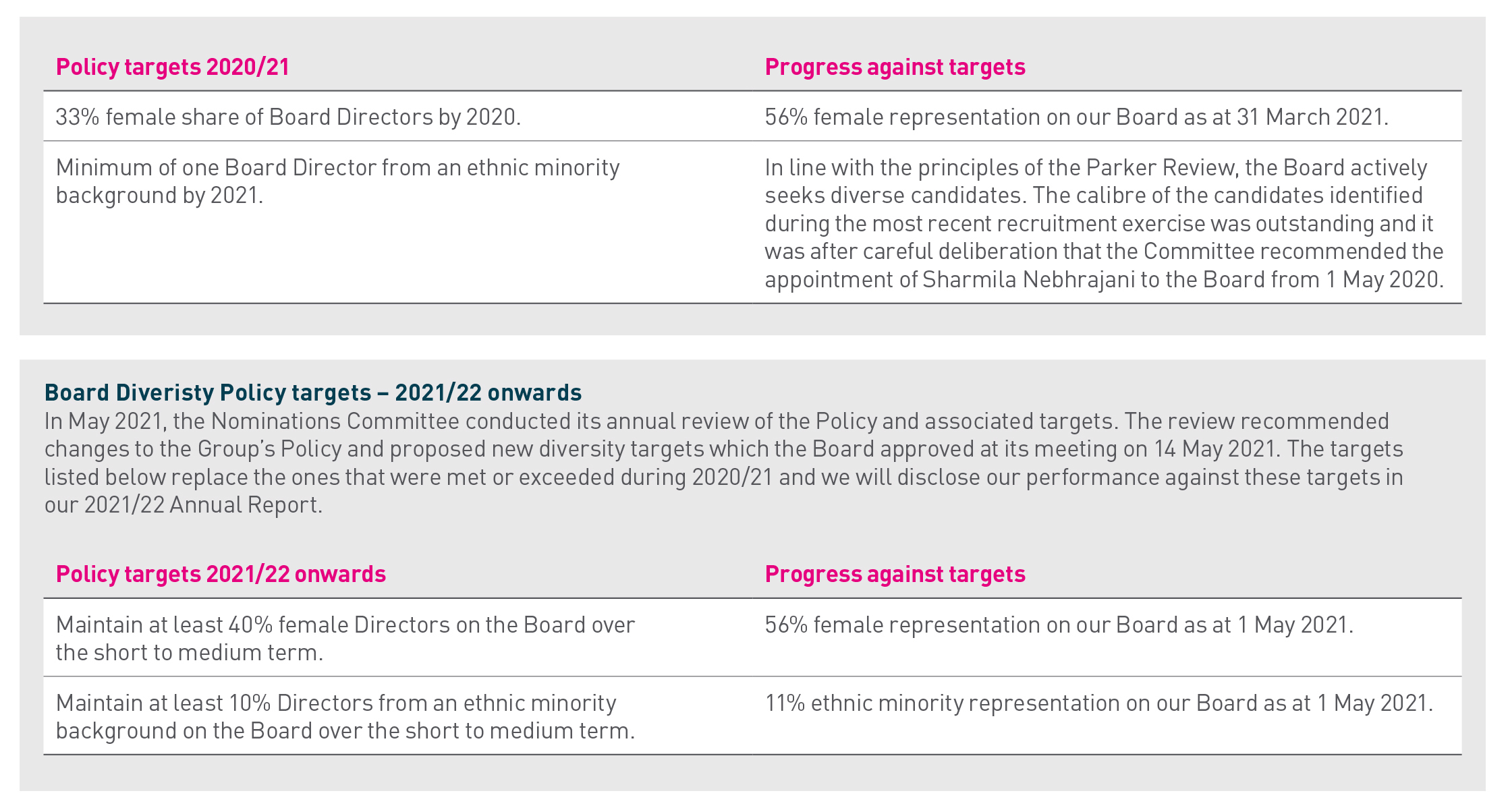 Regulators and investors are stepping up pressure on companies to do more on the diversity and composition of their boards.
Regulators and investors are stepping up pressure on companies to do more on the diversity and composition of their boards.
In March 2022, the Investor Association (IA) announced that the Institutional Voting Information Service will, for the first time, issue its strongest warning – a ‘red top’ – for FTSE 100 companies that fail to meet the Parker Review target of having one ethnically diverse board member, and an ‘amber top’ for FTSE 250 companies that do not disclose the ethnic diversity of their boards or have an action plan to achieve the Parker Review targets by 2024.
 Meanwhile, the Financial Conduct Authority has confirmed that new board gender and ethnic diversity disclosures will be required for listed companies from April 2022 on a ‘comply or explain’ basis.
Meanwhile, the Financial Conduct Authority has confirmed that new board gender and ethnic diversity disclosures will be required for listed companies from April 2022 on a ‘comply or explain’ basis.
The Financial Reporting Council (FRC) continues to encourage companies to be more transparent when reporting on board composition and diversity, and how these feed into board succession planning. The FRC noted in its latest Annual Review of Corporate Governance Reporting, published in November 2021, that there continues to be minimal information on how diversity & inclusion policies and objectives link to company strategy and generally poor reporting by nominations committees on succession planning. So what can companies do to improve reporting in this area?
What information should companies disclose?
Investors and regulators are aware that for many companies building a more diverse board is an ongoing process. Transparency is crucial for building trust. Detailing the composition of the board is a key component in demonstrating to investors that the board has an effective balance of skills, experience and knowledge to deliver your company’s objectives.
To this end, companies should endeavor to be as transparent as possible, and include a wider range of metrics such as gender, ethnicity, tenure, age, skills, experience and knowledge, socio-economic background, sexual orientation and disability. More importantly, companies should disclose diversity objectives and targets, with a clear roadmap and action plan.
Example: Severn Trent 2021 annual report (pages 104 to 106) – Severn Trent includes a diversity dashboard that shows the gender and ethnic diversity of the board in the context of the wider group, along with details of its board diversity policy stating clear objectives and progress against targets.
How can companies show their board is equipped to deliver your strategy?
To demonstrate a link between the composition of the board and the delivery of strategy, many top reporters are now including a detailed skills matrix that shows how the skills, knowledge and experience of individual board members map to the skills required to deliver its strategy.
As well as being a useful tool for investors to understand whether the board has the know-how to deliver on its promises, the skills matrix is an important part of succession planning, highlighting potential gaps in a board’s skill base that need to be filled.
Example: SSE 2021 annual report (page 121) – SSE includes a board composition dashboard with stats on gender balance, rolling three-year female representation, ethnicity, independence, tenure and a forward-looking skills matrix aligned to strategy.
Mei Ashelford is director of reporting intelligence at Gather London












